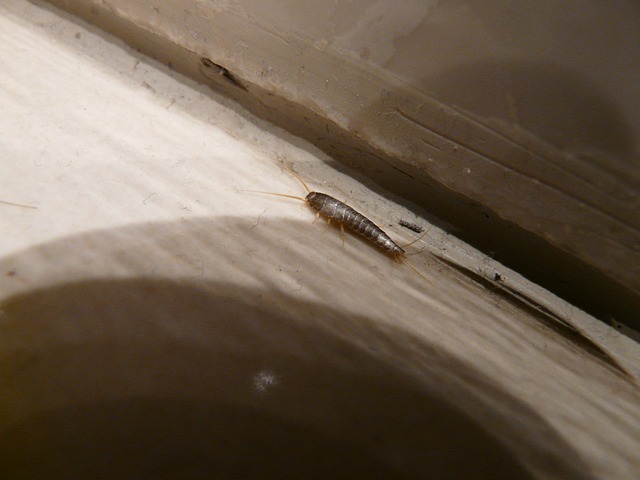Silverfish pose significant threats to valuable items like books, clothing, and historical documents, especially starchy materials. Traditional pest control methods are harmful to both the environment and artifacts. Eco-friendly silverfish solutions, leveraging natural repellents (lavender, cedar wood, diatomaceous earth), breathable storage containers, and regular monitoring, offer safer alternatives. These methods ensure long-term preservation while contributing to a healthier planet, preserving cultural heritage sustainably for future generations. Implementing these eco-friendly strategies is crucial for the delicate care of valuable items.
“Preserving precious books, clothing, and paper artifacts requires specialized care due to threats like silverfish. These tiny insects can cause significant damage to historical items, underscoring the need for effective conservation strategies. This article explores comprehensive eco-friendly solutions to combat silverfish and ensure the longevity of your valuable collections. From understanding their impact to implementing creative preservation techniques, we delve into a multi-faceted approach to protect your cherished possessions.”
Understanding the Threat: Silverfish and Their Impact on Historical Items
Silverfish are tiny insects that can cause significant damage to valuable items like books, clothing, and historical documents. These pests are particularly attracted to starchy materials high in starch content, making them a common menace in archives, libraries, and homes with older collections. Over time, silverfish feeding can result in disintegration, pitting, and loss of color in paper, fabric, and even leather.
While traditional pest control methods exist, many are harmful to both the environment and vulnerable artifacts. Fortunately, eco-friendly silverfish solutions offer a safer alternative. Natural repellents like lavender, cedar wood, and diatomaceous earth can be effective deterrents. Additionally, specialized storage containers designed with breathable materials and tight seals create an inhospitable environment for these insects. These measures, combined with regular monitoring and maintenance, provide a comprehensive strategy to protect precious items from silverfish damage.
The Importance of Eco-Friendly Conservation Methods
In today’s world, where environmental consciousness is on the rise, it’s crucial to adopt eco-friendly conservation methods for preserving precious items like books, clothing, and paper artifacts. Traditional preservation techniques often rely on toxic chemicals that can not only be harmful to the environment but also pose risks to those handling them. As such, there’s a growing need for specialized, non-toxic solutions to combat issues like silverfish damage. Eco-friendly silverfish solutions offer a safer alternative, utilizing natural repellents and organic materials to mitigate infestations without leaving behind hazardous residues.
By opting for these green conservation methods, individuals and institutions can ensure the long-term preservation of their collections while contributing to a healthier planet. Not only do eco-friendly practices reduce environmental impact, but they also promote transparency and peace of mind, knowing that no harmful substances are involved in the preservation process. This shift towards sustainability is particularly important for fragile items that require ongoing care, ensuring their value and integrity remain intact for future generations.
Creative Solutions for Book, Clothing, and Paper Preservation
In the pursuit of preserving precious items like books, clothing, and paper, traditional methods often fall short. This is where creative, eco-friendly solutions step in as game-changers. For instance, when it comes to book preservation, beyond the usual culprits like keeping them away from moisture and direct sunlight, innovative approaches involve using natural repellents. Essential oils like lavender and tea tree oil not only scent books but also act as natural silverfish deterrents.
Similarly, clothing and paper items demand unique preservation strategies. For textiles, using organic fabrics and natural dyes from the get-go can prevent future discoloration and damage. As for paper, an eco-friendly approach involves incorporating plant-based enzymes into archival storage boxes, which break down acids and prevent yellowing over time. These creative solutions not only protect valuables but also align with sustainability goals, ensuring that our cultural heritage remains intact for future generations without resorting to harsh chemicals.
Implementing and Maintaining Effective Protection Strategies
Implementing effective protection strategies for precious items like books, clothing, and paper artifacts requires a thoughtful approach that balances preservation with sustainability. One innovative solution gaining traction is the use of eco-friendly silverfish deterrents. These modern methods offer a safer, non-toxic alternative to traditional pest control chemicals, ensuring the integrity of historical and valuable documents without harming the environment or users.
Regular maintenance plays a pivotal role in keeping these protection strategies robust. This includes routine inspections to identify any signs of infestation or damage early on, as well as implementing preventive measures such as proper storage conditions (e.g., cool, dry environments) and limited access for potential pests. By combining eco-friendly silverfish solutions with diligent care, individuals and institutions can safeguard their cherished items for generations to come.
Protecting valuable books, clothing, and paper items from pests like silverfish requires a thoughtful blend of understanding their behavior and employing creative, eco-friendly solutions. By implementing these specialized strategies discussed in this article, individuals and institutions can safeguard their historical treasures for future generations while minimizing environmental impact. With dedication to conservation and adaptive practices, we can preserve the past without compromising our planet’s health.
